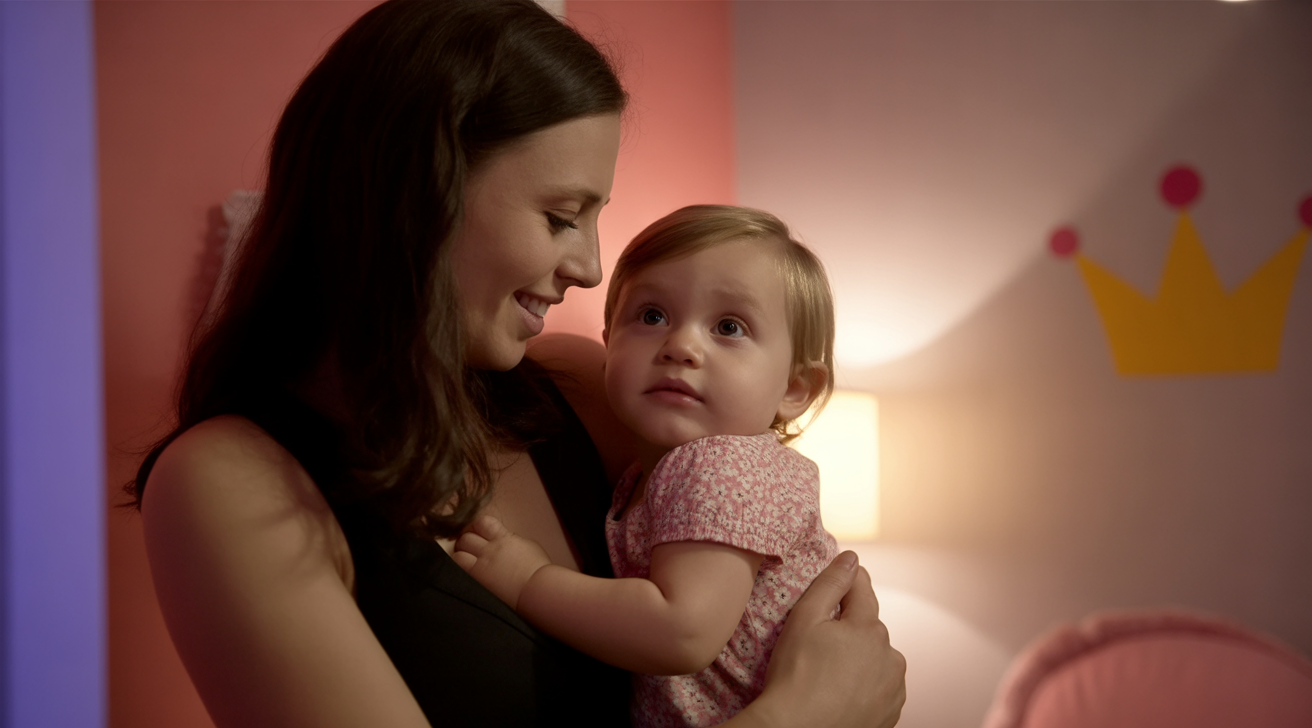End 2-Year-Old Separation Anxiety at Bedtime Tonight

Does your toddler suddenly turn into a tiny detective at bedtime, finding every excuse to keep you nearby?
Separation anxiety at bedtime is like a surprise guest that shows up around age two. Your little one, who used to drift off peacefully, now clings to you like a koala bear when it’s time to sleep.
This phase happens because your child’s brain is growing and learning about being apart from you, which feels scary in the dark.
Did you know that toddlers’ brains can’t tell the difference between you going to the kitchen and you disappearing forever!
Most two-year-olds go through this challenging time. The good news? You’re not alone, and there are gentle ways to help your child feel safe and secure at bedtime.
Sweet dreams are possible, even when your toddler thinks bedtime is a negotiation!
What is 2-Year-Old Separation Anxiety at Bedtime?
Separation anxiety at bedtime is when your 2-year-old gets scared or upset about being away from you when it’s time to sleep.
This happens because toddlers are learning that you exist even when they can’t see you, but they’re not sure you’ll come back! Bedtime makes this worse because it’s dark, quiet, and they have to be alone for hours.
Your little one might cry, cling to you, or keep calling for “one more hug.”
This anxiety is normal and shows their brain is growing, but it can be exhausting for parents who just want everyone to get some rest.The good news? It’s temporary, but it shows your child loves you deeply.
Signs of Separation Anxiety at Bedtime
Bedtime can become a challenging time when children experience separation anxiety. These signs help parents recognize when their little one is struggling with being apart.
- Crying and clinging – The Child holds onto parents and refuses to let go
- Won’t sleep alone – Demands parents stay in the room or fights going to bed
- Takes forever to calm down – Gets worked up and can’t settle down peacefully
- Trouble falling asleep – Lies awake worrying instead of drifting off to dreamland
- Shows fear or panic – Gets scared when placed in crib or bed alone
Remember that separation anxiety is normal and typically improves with time and patience. With gentle support, your child will learn to feel safe and secure at bedtime.
How Separation Anxiety Affects Sleep

Separation anxiety can turn bedtime into a battlefield for 2-year-olds and their exhausted parents. When little ones cry and cling at night, nobody gets the sleep they desperately need.
This creates a vicious cycle where tired toddlers become more cranky and clingy the next day, making separation harder.
Poor sleep affects everything – from a child’s ability to learn new words and play nicely with friends to their mood swings and tantrums.
Parents also suffer, becoming irritable and stressed from their own sleep loss, which makes them less patient during already difficult bedtime routines. Breaking this cycle is crucial for everyone’s well-being.
Tips for Easing Separation Anxiety at Bedtime
Bedtime battles got you down? These simple tricks can help your child sleep peacefully and independently.
- Create a calming routine – Same activities every night help kids feel safe and ready for sleep.
- Use comfort objects – A favorite stuffed animal or blanket becomes their brave bedtime buddy.
- Practice gradual separation – Start nearby, then slowly move further away each night until independence grows.
- Stay calm and patient – Comfort with hugs and gentle words, but avoid creating new sleep habits.
- Take care of yourself – When parents feel relaxed about bedtime, kids pick up on that peaceful energy.
Sweet dreams are coming! With consistency and patience, bedtime can become everyone’s favorite time.
When to Seek Professional Help

Sometimes separation anxiety lasts longer, and that’s okay! If your child is over 3 and still has major meltdowns when you leave or bedtime struggles worsen, consider seeking help.
Think of it like calling a mechanic when your car won’t start – sometimes we need professional help!
Your pediatrician can check if everything’s developing normally, while sleep consultants are like bedtime superheroes who know all the tricks.
Child therapists are skilled listeners who help children work through intense emotions. Remember, asking for help shows you’re a caring parent, not a failing one!
Summing It Up
Bedtime battles with your 2-year-old can feel endless, but remember – this tough phase won’t last forever!
With patience and love, peaceful bedtimes are possible, though some nights are harder, which is normal. Every small step is worth celebrating, even if progress seems minimal.
Your toddler’s separation anxiety shows how much they love and need you. That’s special, even when you’re exhausted!
What bedtime tricks have worked magic in your house? Drop a comment below and share your sleepy-time secrets with other tired parents!
For parents dealing with their child’s developmental stages, you may also find helpful insights in our post on 2-Year-Old Not Talking But Understands Everything?, which addresses communication challenges that can also impact emotional development, including separation anxiety at bedtime.
Frequently Asked Questions
Can Separation Anxiety at Bedtime Affect My Child’s Overall Development?
Yes, separation anxiety at bedtime, especially in a 2-year-old, can potentially impact a child’s overall development if it’s severe or prolonged
What are the Risk Factors for Separation Anxiety Disorder?
Risk factors include family history of anxiety, major life changes like moving or divorce, loss of loved ones or pets, and traumatic events or disasters.
What is the 3-3-3 Rule for Anxiety in Children?
The 3-3-3 rule helps manage anxiety by identifying three things you see, three sounds you hear, and moving three body parts. This grounding technique shifts focus from anxious thoughts to the present moment.






